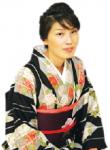2021/03/12
Easy Peasy Japaneasy - 死霊をまとめて復讐しておきます

学習者の観点から、ちょっと日本語と日本文化を見てみませんか。
日本人では気付かない鋭い指摘に、あなたはどこまで答えられますか。
Let me share with you some real stories happening to students –
how much do you know about Japanese language and its culture?
| 死霊をまとめて復讐しておきます |
辞書を引くのが大好きな学生Andyさん。宿題で、ある日本語の文章をこのように英訳して来たことがありました。「レポートを書く前に、死霊をまとめておきます。」まとめられた死霊で書かれたレポートとは…? 想像すると怖いです。そして引き続き、次の文章。「レッスンが終わったら、復讐しておきます。」…その時はAndyさんから少しばかり殺気を感じました。
本当の答えは、「死霊」じゃなくて「資料」、「復讐」じゃなくて「復習」でした。同じ音だけど、意味が違うと説明すると、“あぁ、ややこしい~ややこしい~…”とAndyさんは頭を抱えてしまいました。
日本語は音が少なく、組み合わせが多くできない事から、同じ音なのに異なる意味を持つ言葉、つまり「同音異義語」がたくさんあります。日本人の皆さんはそれを自然と、アクセントの違いで聞き分けています。日本語は高低アクセントと言われ(英語は強弱アクセントです)、たとえば、「橋」と「箸」。「箸」は「は↘し」、「橋」は「は↗し」という様に、高低で言い分けをします。例えば、「神(か↘み)の髪(か↗み)」と言えば、標準語を話す誰もが髪の毛の神様ではなく、神様の髪の毛を思い浮かべるでしょう。(ちなみに、標準語の高低と関西の高低は、ほぼ逆になる場合が多いらしいので、気を付けましょう。)
ただし、冒頭の例(死霊vs資料、復讐vs復習)のように、高低すら同じ場合もあります。それは、もう文脈で聞き分けるしかありません。英語でも、Do you know?と聞いて、「アイノウ」と返ってくれば、誰もがI know! だと思い、I No! だと思う人はいないでしょう?
Andyさんがある日のレッスンで、”あぁ、ややこしい、ややこしい…“とまた頭を抱えていました。どうしたの? と聞くと、受付で「三奈さんは元気ですか」と聞きたかったのに、「はい、みんな元気です」と返ってきたといいます。その日のレッスンは、「三奈(み↘な)さん」&「皆(み↗な)さん」の発音の違いから始めました。それにしても、自分の名前でレッスンができてしまうなんて、私は日本語教師となる定めだったのですね…笑。
| I will revenge after putting the spirits of dead people together !? |
Andy is a beginner student who likes using the dictionary. One day, he translated some Japanese sentences into English. “Before writing a report, I will put the spirits of dead people together”. I felt very scared. And then, he continued the translation “After the Japanese lesson, I will revenge.” I thought, “Should I run away from Andy?”
I explained to Andy that there are fewer pronunciations in Japanese than other languages. Therefore, there are many words that have the same pronunciations but different meanings. “The spirit of a dead person” (SHIRYOU) is the same word as “document” (SHIRYOU), and “Revenge” (FUKUSHUU) is the same word as “Review” (FUKUSHUU). Therefore, the correct translations are “Before writing a report, I will put the documents together” and, “After the Japanese lesson, I will review it.” Andy mused, “Japanese is very complicated….”
One technique to distinguish these words is to listen for the accent or emphasis. Japanese language has a pitch accent (high and low). For example “HASHI” – “HA↘SHI” means chopsticks, “HA↗SHI” means bridge. More advanced? When Japanese people hear “KA↘MI (God) no KA↗MI (Hair)”, we Japanese can guess you are talking about “God’s hair” not “God of hair”.
However, as with the examples at the beginning of this article, some words have the same accents! In such cases, it is easiest to use context – a similar example in English is if you ask someone “Do you know?” then you can guess that the answer is “I know” not, “I No!”
Another day, Andy said again “Japanese is very complicated.” I asked, “Why?” He told me that he asked at the reception, “How is Mina san (my name)?”, but the Receptionist replied, “Everyone (Mina san) is fine!” We started the practice between “MI↘NA san (my name)” and “MI↗NA san(Everyone)” at the beginning of our lesson on that day. Sorry you have a Japanese teacher with such a confusing name Andy san!
(Please note that the pitch of words I used as examples in this article are based on the standard accent. There are local differences in accents, and Osaka is sometimes the opposite of Tokyo accent!)
(Please note that the pitch of words I used as examples in this article are based on the standard accent. There are local differences in accents, and Osaka is sometimes the opposite of Tokyo accent!)
 Japaneasy 日本語学校
Japaneasy 日本語学校

M: 0422-266-308
W: www.japaneasy.com.au
E:reception@japaneasy.com.au
Level 1, 152 Little Lonsdale St. Melbourne
W: www.japaneasy.com.au
E:reception@japaneasy.com.au
Level 1, 152 Little Lonsdale St. Melbourne
Japaneasy日本語教師養成講座420時間コース 受付中!
★メルボルンで日本語教師の資格を取って活躍の場を広げよう★
★メルボルンで日本語教師の資格を取って活躍の場を広げよう★
